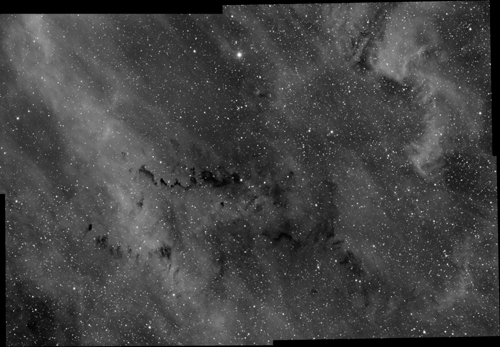
Location & Date
|
Backyard, Abbott Observatory- Long Island, NY, September 2020
|
Telescope
|
TMB130SS F/7 APO, Moonlite focuser, Losmandy G11 Gemini
Image scale 1.54 arcsec/pixel
|
Camera
|
SBIG ST-10XME
Baader 5nm Ha & G,B filters
CCD temp -15°C
|
Exposures
|
Ha-6x10m, Green-9x5m, Blue-9x5m Bin 1x1 per each 4 panel mosaic
|
Planning & Acquisition
|
Mosaic planning - Sequence Generator Pro
Image acquisition - Sequence Generator Pro w/PinPoint & PHD2 (guiding)
|
Processing
|
CCDStack - calibration, de-bloom
Astro Pixel Processor - Normalize, Alignment, Combine, mosaic stitching
Adobe Photoshop - Color blending, Noise reduction, JPEG conversion
This is a 4 panel mosaic using Ha (Red)+G+B
|
